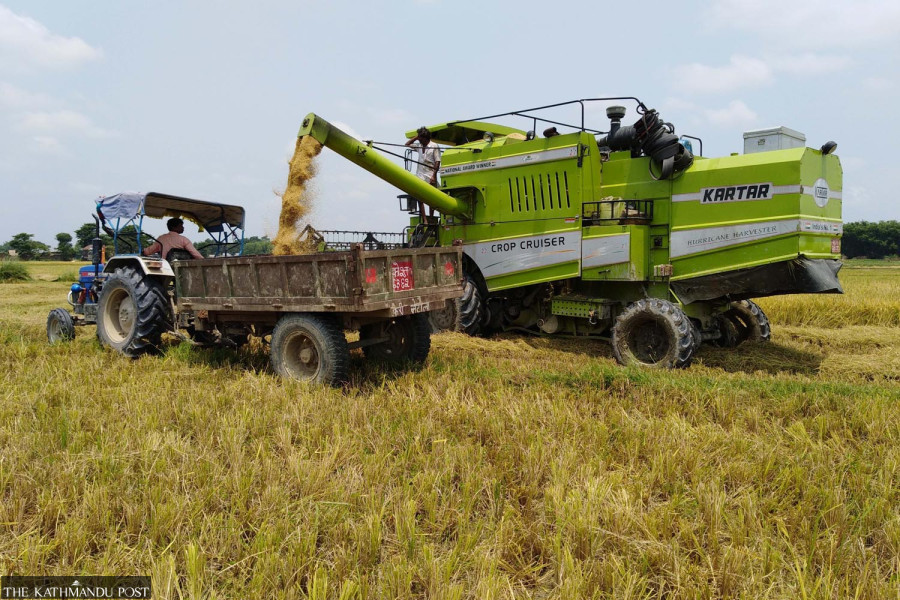Editorial
Harvesting hope
The country should now focus on commercialising paddy production, targeting the urban population.
Nepal’s paddy fields continue to defy expectations. According to a preliminary forecast by the Ministry of Agriculture and Livestock Development, the country is expected to produce 5.72 million tonnes of paddy this fiscal year, up 4.33 percent from last year. This comes as a great relief for the farmers of a country that has long struggled with low paddy output and high inflation. And at a time when nations, including ours, are struggling with rice shortages and price hikes in essential grains, this is a much-needed shot in the arm.
In April last year, South Asian meteorologists warned that the El Niño effect would bring below-normal monsoon rains or drought-like conditions in Nepal. The South Asian Climate Outlook Forum-25, Nepal’s Department of Hydrology and Meteorology and agricultural scientists seconded that, worrying about a possible drop in paddy output. Due to unpredictable rainfalls, floods, and monsoon delays, the efforts of our farmers have indeed gone to waste in past years. This year, interestingly, defying the odds brought about by El Niño, the country is set to record its highest-ever production.
The bumper harvest will also boost the country’s ailing economy, contribute to gross domestic product and help tame inflation (the central bank’s new report on December 2023 shows the mid-October to mid-November inflation rate of 5.38 percent). Currently, paddy contributes 4 percent to the country’s GDP; it is said that if paddy production is up 10 percent, it pushes the economy in the same direction by 1 percent. The increased output will also offset rice imports from India, thereby controlling spiralling market prices.
This, of course, shouldn’t invite complacency as the effects of climate change are real and many districts of the southern plains, like Siraha and Dhanusha, are still highly vulnerable to droughts as well as monsoon floods. These Tarai districts also lack good irrigation facilities and tubewells. Similarly, the country has yet to boost paddy production through spring paddy. Rice is currently planted on just 104,712 hectares despite having 1.43 million hectares suitable for it.
Achieving record production is a huge achievement for a rice-dependent country like ours; however, we should think one step ahead now. For that, the country should focus on commercialising paddy production, targeting the urban population who consume long-slender grains and basmati (aromatic) rice. Nepal still doesn’t produce these varieties. The area under paddy production has dropped by 1.73 percent this fiscal year, which should be a matter of concern too.
Previously, in 2020-21, when the country harvested 5.62 million tonnes of paddy—a record high then—migrant workers had returned home due to the Covid-19 pandemic, and farmers were given sufficient fertilisers. The country also had a favourable monsoon. This year, too, there was a reduction in post-harvest losses and increased farm mechanisation as Nepal imported chemical fertilisers worth Rs40 billion. The farmers should continue to get the same kind of support in the subsequent years. Moreover, the country has to devise ways to entice migrant workers to make money through urban market-centred paddy production.
We shouldn’t forget how the country suffered when India, the second biggest rice-producing country in the world after China, last year banned the export of non-basmati rice that is cooked in most Nepali kitchens. Time has come to heed the concerns of tens and thousands of rice farmers and support them in every way.




 6.1°C Kathmandu
6.1°C Kathmandu














